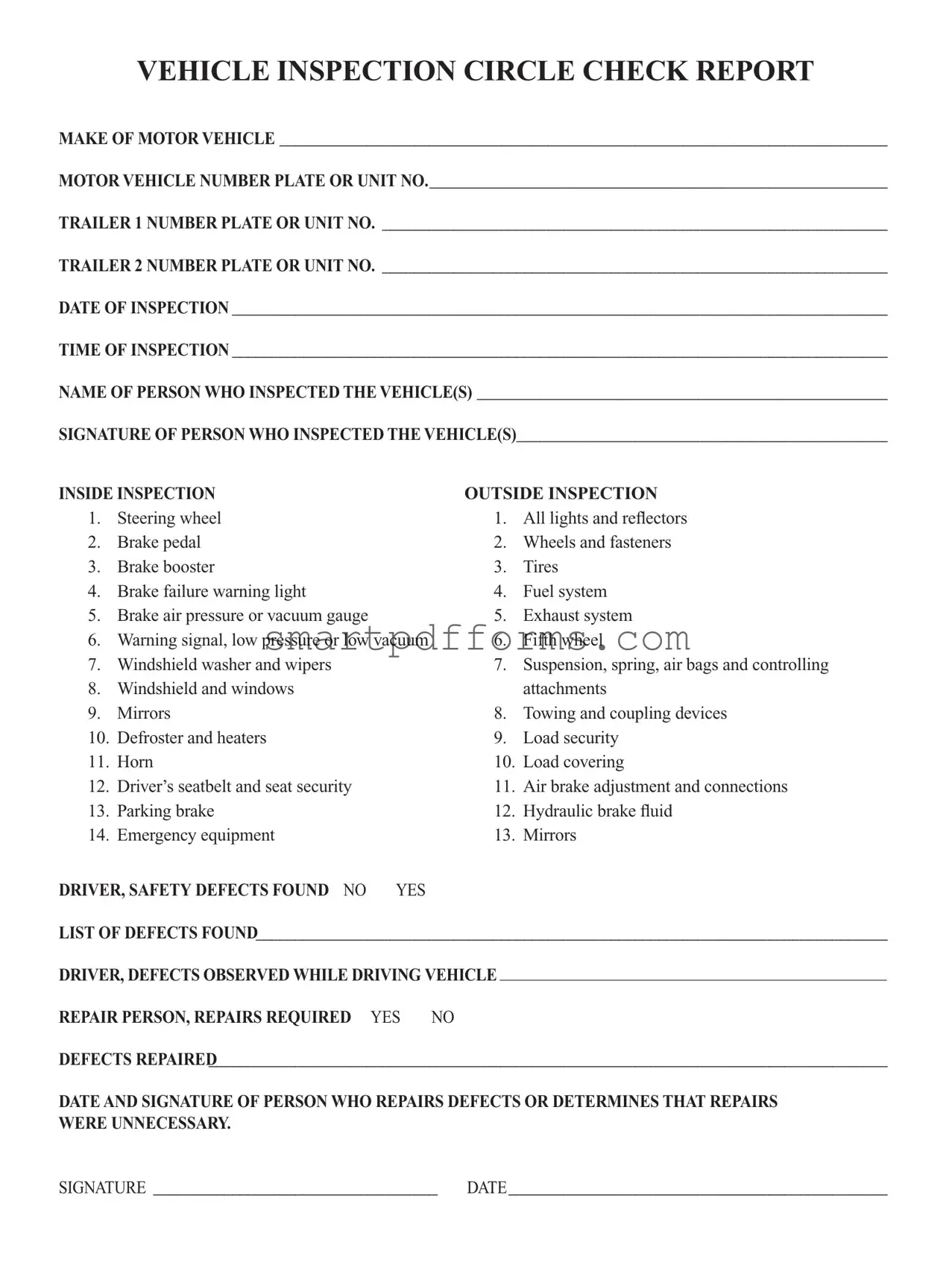
VEHICLEINSPECTIONCIRCLECHECKREPORT
MAKEOFMOTORVEHICLE _____________________________________________________________________________
MOTORVEHICLENUMBERPLATEORUNITNO.__________________________________________________________
TRAILER1NUMBERPLATEORUNITNO. ________________________________________________________________
TRAILER2NUMBERPLATEORUNITNO. ________________________________________________________________
DATEOFINSPECTION ___________________________________________________________________________________
TIMEOFINSPECTION ___________________________________________________________________________________
NAMEOFPERSONWHOINSPECTEDTHEVEHICLE(S) ____________________________________________________
SIGNATUREOFPERSONWHOINSPECTEDTHEVEHICLE(S)_______________________________________________
INSIDEINSPECTION |
OUTSIDEINSPECTION |
1. Steeringwheel |
1. Alllightsandrelectors |
2. Brakepedal |
2. Wheelsandfasteners |
3. Brakebooster |
3. Tires |
4. Brakefailurewarninglight |
4. Fuelsystem |
5. Brakeairpressureorvacuumgauge |
5. Exhaustsystem |
6. Warningsignal,lowpressureorlowvacuum |
6. Fifthwheel |
7. Windshieldwasherandwipers |
7. Suspension,spring,airbagsandcontrolling |
8. Windshieldandwindows |
attachments |
9. Mirrors |
8. Towingandcouplingdevices |
10. Defrosterandheaters |
9. Loadsecurity |
11. Horn |
10. Loadcovering |
12. Driver’sseatbeltandseatsecurity |
11. Airbrakeadjustmentandconnections |
13. Parkingbrake |
12. Hydraulicbrakeluid |
14. Emergencyequipment |
13. Mirrors |
DRIVER, SAFETY DEFECTS FOUND NOYES
LIST OF DEFECTS FOUND ________________________________________________________________________________
DRIVER, DEFECTS OBSERVED WHILE DRIVING VEHICLE
REPAIR PERSON, REPAIRS REQUIRED YESNO
DEFECTS REPAIRED______________________________________________________________________________________
DATE AND SIGNATURE OF PERSON WHO REPAIRS DEFECTS OR DETERMINES THAT REPAIRS WERE UNNECESSARY.
SIGNATURE ____________________________________ DATE________________________________________________

